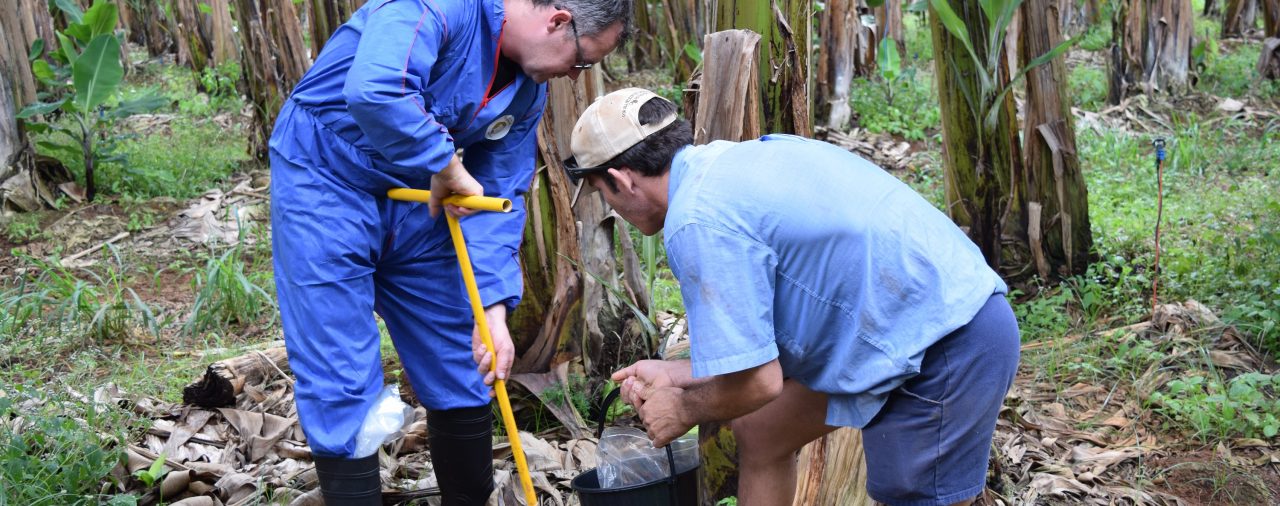Tony Pattison, Hazel Gaza, Paul Dennis and Henry Birt
The microbes in our bodies, and the discoveries of how important these are for our wellbeing, provide us with new insights for agriculture and banana research.
Our bodies host an incredible 30 trillion microbial cells that help to keep us strong and healthy! To put this in perspective, 30 trillion seconds is equivalent to 960 thousand years, the time before modern humans, lower sea levels and when Australia was connected to Papua New Guinea!
Like us, banana plants also host trillions of microbial cells that contribute to their well-being. Occasionally, disease-causing microbes can infiltrate these communities with devastating consequences for the plant. One such intruder is Fusarium oxysporum f. sp. cubense Tropical Race 4 (TR4), which is the fungus that causes Panama Disease in Cavendish bananas.
In humans, various diseases have been linked with imbalances in the microbial communities on and within our bodies. For bananas though, research is in its infancy. Initial results indicate that soil type and farm management practices have big impacts on the organisms present within the plants. It is also evident that different microbial species live in different plant tissues (e.g. roots, shoots, and leaves).
Importantly, in North Queensland we have found that non-disease causing populations of Fusarium oxysporum dominate all tissue types of Cavendish and other banana varieties, irrespective of the soil in which the plants are grown. The extent to which TR4 can compete with locally established Fusarium oxysporum strains for space within the plants and cause disease remains to be determined. It is likely though, that this will be strongly influenced by the biological health of our soils as this affects the resistance and resilience of banana production systems to TR4 and other stresses.
By understanding what makes up the banana microbiome in the various banana tissue, including the soil, it is possible to find groups of organisms that occupy the same space as Fusarium and thereby target competitors through better soil management and strategic addition of the organisms into environments where we know they will survive.
The unravelling of the banana microbiome has a long way to go to catch up with human health services, but we can use the advances made in human health to quickly advance the knowledge and management tactics used to improve the health of banana plants. Early results indicate that there are more opportunities to understand the banana microbiome and manipulate it to suppress Panama disease.
*Article compiled by Tony Pattison and Hazel Gaza, from the Department of Agriculture and Fisheries South Johnstone; and Paul Dennis and Henry Birt, from the School of Earth and Environmental Science, University of Queensland. This project was funded by Hort Innovation, using the Hort Innovation banana research and development levy, co-investment from Queensland Government and contributions from the Australian Government. Hort Innovation is the grower-owned, not-for-profit research and development corporation for Australian horticulture.


